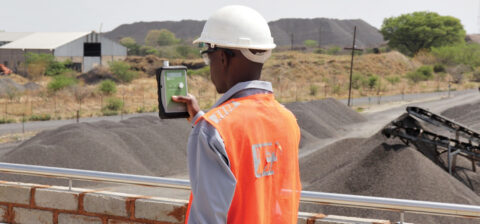SA Mining
Mining Construction: Fierce Competition
The current outlook for the construction industry is clearly tough, and is likely to remain this way for some time to come. In order to materially change the industry outlook, substantial infrastructure investment will be required, and it is imperative that mining capital expenditure restarts, neither of which looks a likely possibility in the current economy.
While not all construction companies have been affected equally, most are suffering to one extent or another. Those that are taking less strain are businesses that are undertaking a range of building activity and contracts elsewhere around the globe, as well as those entities that have decreased their exposure to the mining industry.
According to Koketso Seripe, director of business development and sales at global engineering and construction company Fluor in South Africa, while capital expenditure is likely to remain under pressure for the next 12 to 18 months, prospects are returning to the mining market.
“The decrease in capital expenditure has created intensified competition in the construction market, leading to a considerable amount of change in the industry landscape, characterised by company closures, restructuring and strategic redirection,” he says.
“Fluor has leveraged its execution strategy by offering integrated engineering, procurement, fabrication and construction (EPFC) solutions to meet clients’ need for greater capital efficiency. This transformation has also helped us to deliver sustainable and profitable growth.”
New focuses and challenges
Seripe points to sustainability, safety and productivity as some of the key areas of focus for mining houses globally. Technology development and enhancement, he explains, are certainly gaining momentum as an enabler to achieving a sustainable industry.
“With increased technology comes the requirement for relevant skills to operate as well as interface with complex equipment and processes. Hence, talent and leadership development, strategic partnerships with key stakeholders and industry partners, as well as governance, are some of the current focus areas for mining houses.
“Mechanisation and automation of the mining industry also have the potential to yield improved economics for projects and operations that are situated high on the cost curve. Examples include an enhanced ability to access complex ore bodies, significantly improved energy and water efficiencies, and the reduced cost of safety compliance,” says Seripe.
One of the major challenges facing the industry today, according to experts, is the industrial unrest South Africa continues to experience. This can cause project delays and disruptions, leading construction companies to think twice before committing to invest in new capital projects within the mining sector.
Strikes continue to inflict significant short and medium-term damage on the economy, in addition to disrupting both project and business performance. Furthermore, they place additional pressure on underlying contractual relationships. These strikes also increase the risk of construction companies not being compensated for expenses due to delays and disruptions.
“Looking ahead, while Africa as a whole needs to realise that it competes with other mining destinations in the world for capital investment, it should seek to make itself a more viable destination; at least with commodities finally looking up, this should provide a sufficient upward cycle to sustain investor interest in Africa,” he concludes.






 Sign-up and receive the Business Media MAGS newsletter OR SA Mining newsletter straight to your inbox.
Sign-up and receive the Business Media MAGS newsletter OR SA Mining newsletter straight to your inbox.